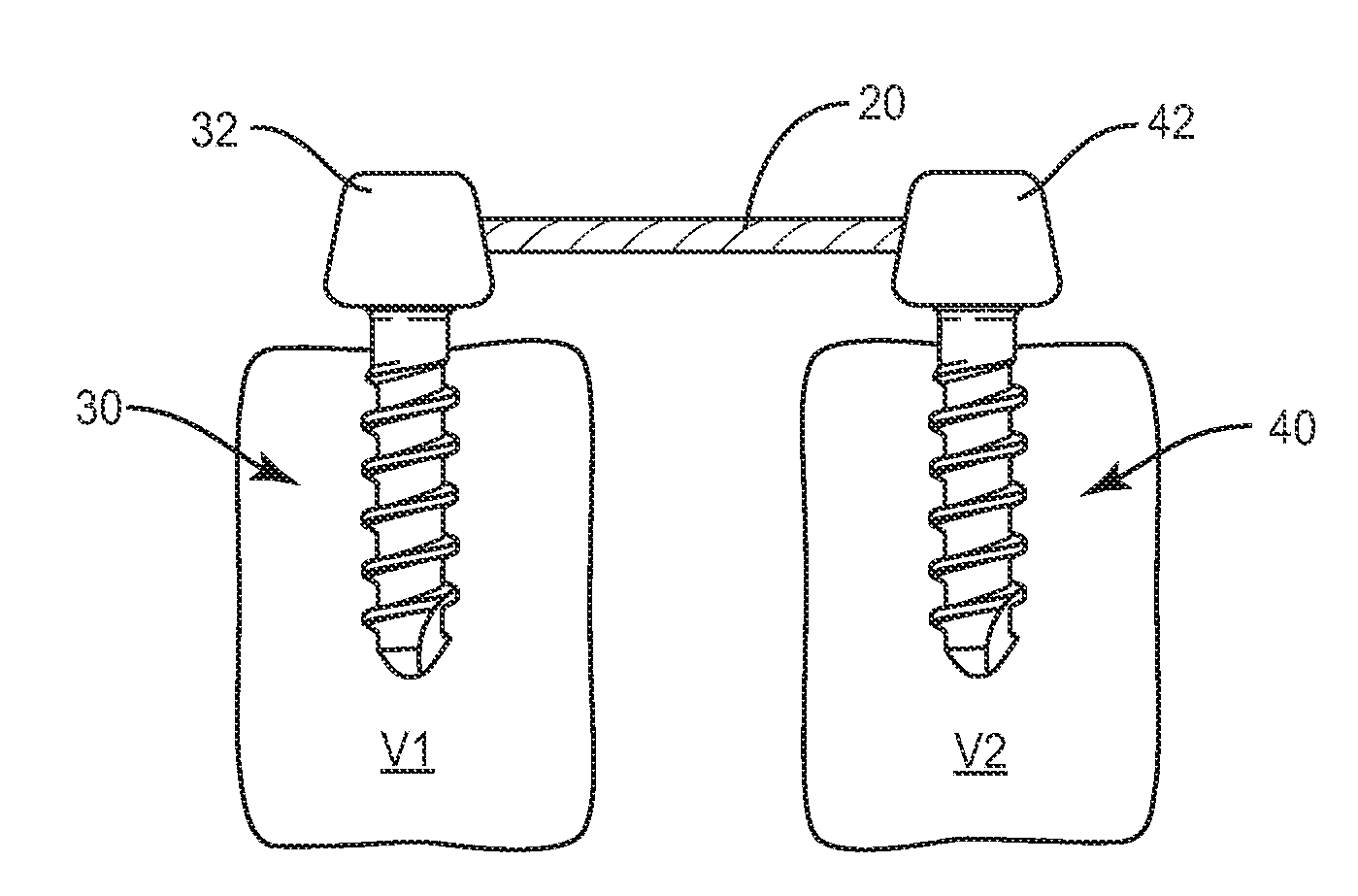Spinal systems and methods for correction of spinal disorders
a spinal system and system technology, applied in the field of spinal systems and methods for spinal disorders, can solve the problems of poor or slow fusion rate, significant cosmetic deformities, partial to complete loss of joint function and stability, etc., to reduce the number of surgical steps, reduce the number of inventory parts, and minimize the manipulation of many parts
- Summary
- Abstract
- Description
- Claims
- Application Information
AI Technical Summary
Benefits of technology
Problems solved by technology
Method used
Image
Examples
Embodiment Construction
[0039]The exemplary embodiments of the spinal construct disclosed are discussed in terms of medical devices for the treatment of musculoskeletal disorders and more particularly, in terms of a spinal construct for fusionless correction of a spine disorder. It is envisioned that the spinal construct may be employed in applications such as fusionless correction of deformities, such as scoliosis. For example, the spinal construct can include attachment of a tether to a convex side of a spine that is curved due to a deformity (e.g., scoliosis). It is contemplated that while the tether may be affixed to a first side of each of a plurality of vertebrae to prevent growth of vertebrae of the first side, the system allows for growth and adjustments to a second side of the plurality of vertebrae.
[0040]It is also contemplated that the present disclosure may be employed to treat spinal disorders such as, for example, degenerative disc disease, disc herniation, osteoporosis, spondylolisthesis, st...
PUM
 Login to View More
Login to View More Abstract
Description
Claims
Application Information
 Login to View More
Login to View More - R&D
- Intellectual Property
- Life Sciences
- Materials
- Tech Scout
- Unparalleled Data Quality
- Higher Quality Content
- 60% Fewer Hallucinations
Browse by: Latest US Patents, China's latest patents, Technical Efficacy Thesaurus, Application Domain, Technology Topic, Popular Technical Reports.
© 2025 PatSnap. All rights reserved.Legal|Privacy policy|Modern Slavery Act Transparency Statement|Sitemap|About US| Contact US: help@patsnap.com



